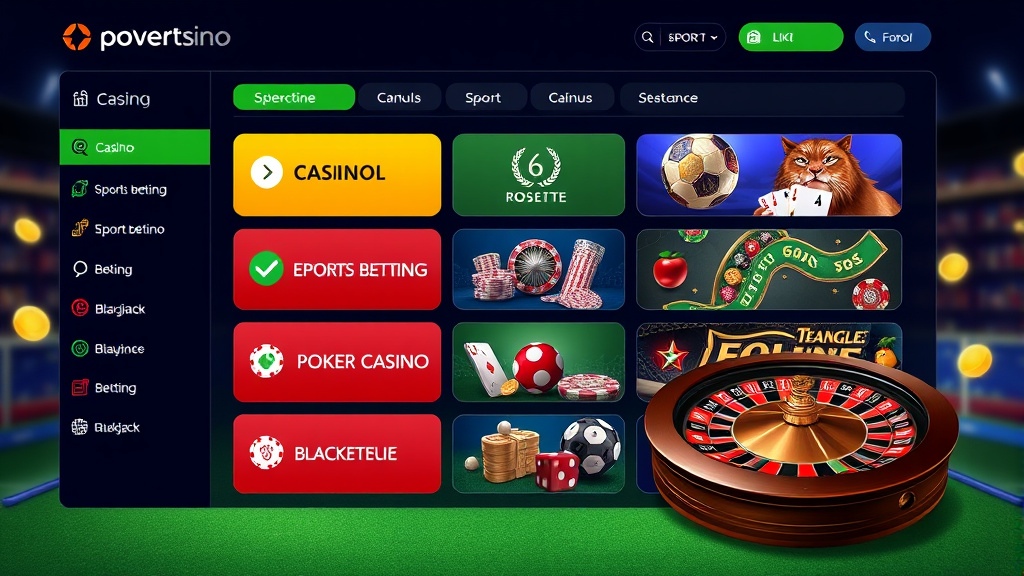The rise of the manga manhwa app market has revolutionized the way enthusiasts access, read, and engage with their favorite comics. As smartphones and tablets become ubiquitous, these apps serve as convenient portals that bring a vast universe of manga and manhwa right into users’ hands, transcending geographical and linguistic barriers. This comprehensive guide explores the dynamic landscape of manga and manhwa apps, highlighting top platforms, their differentiation points, essential features, industry impact, monetization models, legal considerations, future outlooks, UX design principles, and subscription strategies.
The Rise of Manga and Manhwa Apps: A Comprehensive Overview
Over the past decade, manga and manhwa apps have experienced exponential growth due to increasing digital literacy, mobile device proliferation, and a burgeoning global anime and comic fandom. Traditional print media faced declining sales and the high costs associated with physical publishing, prompting creators and publishers to pivot toward digital platforms. The manga manhwa app ecosystem has democratized access, allowing independent artists, international publishers, and fans to circulate works immediately across borders. This turnaround has created a rich, diverse, and rapidly evolving content landscape that appeals to millions of readers worldwide.
What truly fuels this revolution is not merely convenience but also the personalized experience these apps offer. Algorithms recommend series based on reading habits, social features foster community engagement, and monetization options make the model sustainable for creators. The shift towards on-demand digital consumption signifies a pivotal moment in comic culture, placing manga and manhwa apps at the heart of a new entertainment paradigm that is inclusive and accessible.
 Hình minh họa: manga manhwa app – manga ntr
Hình minh họa: manga manhwa app – manga ntrTop 10 Manga and Manhwa Apps for Avid Readers
The manga and manhwa app marketplace is flooded with options catering to different tastes and needs, but some apps stand out due to their extensive catalogs, user-friendly interfaces, and innovative features. Platforms like VIZ Manga, MangaPlus, and Lezhin Comics have established themselves as industry leaders by partnering directly with creators and publishers. Apps such as Webtoon, Tappytoon, and Manga Rock (now INKR Comics) have garnered massive followings through their wide-ranging genres and free-to-read policies, supplemented by optional premium subscriptions. Asia’s largest networks, including KakaoPage and Comico, are expanding their reach globally, offering a plethora of original titles.
Choosing the right app depends on individual preferences—some readers prioritize extensive free libraries, while others seek exclusive curated content and faster updates. Many top apps incorporate community features like comment sections, fan translations, and social sharing, further enriching the reading experience. For dedicated manga and manhwa fans, engaging with multiple platforms can uncover rare titles and gain access to diverse styles from traditional to web-based experimental works.

Manga vs. Manhwa Apps: Understanding the Key Differences
While manga manhwa app platforms often lump these two forms together, significant differences exist rooted in their origins, art styles, storytelling conventions, and publication formats. Manga, originating from Japan, typically features black-and-white illustrations, serialized chapters, and a certain aesthetic identity that emphasizes expressive line art. Manhwa, from Korea, often boasts full-color pages, a distinct horizontal reading flow, and narratives influenced by Korean culture and societal themes.
From a technical standpoint, manga apps mirror traditional manga distribution with vertical scrolls and chapter-based organization, whereas manhwa platforms leverage webtoon-style continuous scrolling that optimizes mobile reading. Apps dedicated to each format may prioritize different features—such as lighting modes for long reading sessions or community discussion tools—and understanding these differences can greatly enhance user experience. Recognizing these distinctions allows readers and developers alike to appreciate the unique artistic and cultural qualities each format offers within the manga manhwa app ecosystem.
Essential Features to Look for in a Manga/Manhwa App
A top-tier manga manhwa app combines an intuitive interface with rich features that enhance reading enjoyment and community engagement. Offline access for downloaded chapters is crucial for uninterrupted reading without relying on internet connections. A robust library search, filtering options, and personalized recommendations help readers discover new titles aligned with their tastes. Furthermore, real-time updates alert fans to the latest chapters, keeping their favorite stories fresh and engaging.
Other vital features include customizable reading modes, such as day/night themes, adjustable brightness, and navigation controls that support vertical and horizontal scrolling. Community integration—like comment sections, fan art sharing, and chat forums—fosters a sense of belonging among users. For creators, supportive features like tip jars, royalty sharing, and analytics tools are equally important to help sustain a thriving ecosystem. As the manga manhwa app market matures, these features collectively elevate the user experience and encourage sustained engagement.
How Manga and Manhwa Apps are Revolutionizing the Industry
The advent of manga manhwa app platforms has democratized the industry by lowering barriers for new creators and expanding access to diverse stories. Traditional publishers often gatekeep content behind paywalls or limited retail channels, but apps allow independent artists to publish directly, often experimenting with formats and genres that would be less viable in print. This shift not only broadens the creative landscape but also accelerates the pace at which new content reaches audiences globally.
Such apps have also introduced innovative monetization strategies like microtransactions, freemium models, and ad-based revenue, enabling sustainable creator income while offering free or affordable access to readers. Additionally, these platforms promote fan engagement through social features and interactive content, transforming passive readership into active communities. As the industry embraces technology, manga manhwa app ecosystems are becoming more inclusive, culturally diverse, and dynamic, reshaping how stories are created, distributed, and consumed.
Monetization Strategies in Manga and Manhwa App Development
Developers of manga manhwa apps employ a mix of monetization models tailored to user preferences and regional markets. Freemium approaches, where basic chapters are free but exclusive, early releases or bonus content are behind paywalls, are prevalent. Subscription plans provide unlimited access and are attractive to avid readers who wish to explore extensively without per-chapter charges. Alternatively, in-app purchases for virtual goods, such as badges, customization options, or tipping creators, foster community support and personal expression.
Advertising revenue remains a core strategy, especially in free-tier app versions, but balancing ads with user experience is crucial to prevent frustration. As the industry evolves, hybrid models combining free access, subscriptions, and microtransactions are becoming mainstream, offering flexibility for users and sustainable income streams for creators. Thoughtful monetization—focused on adding value rather than exploiting users—ensures long-term success while supporting a vibrant, ever-expanding manga and manhwa universe.
Copyright and Piracy Concerns in the Manga/Manhwa App Ecosystem
The rapid digital distribution of manga and manhwa has inevitably raised significant copyright and piracy concerns. Unauthorized sharing and scanlations can undermine creators' rights, leading to lost revenue and disincentivizing original work. Recognizing this challenge, many manga manhwa app developers invest in anti-piracy measures, digital rights management (DRM), and strict licensing agreements to protect intellectual property.
Furthermore, establishing official, legal platforms with comprehensive catalogs helps reduce the appeal of unauthorized sources. Transparent communication with fans about licensing and fair compensation builds trust and loyalty. Despite these efforts, piracy remains a persistent issue; hence, industry stakeholders must continuously innovate, collaborate internationally, and educate users about the importance of supporting original creators to uphold the integrity and sustainability of the manga and manhwa industries.
Future Trends in Manga and Manhwa App Technology
Looking ahead, manga manhwa app technology is poised to incorporate cutting-edge innovations like augmented reality (AR), virtual reality (VR), and artificial intelligence (AI) to create immersive reading environments. AR could enable fans to explore 3D character models or interactive backgrounds, enhancing engagement through augmented experiences. AI-driven recommendations and content moderation will refine personalized feeds and improve safety within community features.
Moreover, blockchain technology promises to introduce secure digital ownership via non-fungible tokens (NFTs), enabling fans to collect, trade, and showcase exclusive digital assets linked to their favorite titles. Cloud-based collaborative tools may also empower community-driven content creation, enabling fans to participate in story development or translation projects directly within the app. Embracing these trends can keep the manga manhwa app ecosystem innovative, vibrant, and adaptable amid rapid technological advancements.
User Experience (UX) Design for Optimal Manga/Manhwa App Engagement
Excellent manga manhwa app UX design hinges on simplicity, responsiveness, and aesthetic appeal. A clean, uncluttered interface allows readers to navigate effortlessly through vast libraries, switch between genres, and customize their reading environment. Intuitive gesture controls and minimal loading times are vital for a smooth experience, especially given the mobile-centric nature of these apps.
Designing for accessibility is equally important; features like adjustable font sizes, color contrast options, and audio descriptions ensure inclusivity. The overall goal is to foster a seamless, immersive environment where users feel motivated to spend hours exploring content, engaging with communities, and supporting creators. Continuous user feedback mechanisms and analytics should inform iterative design improvements, cementing the app as an engaging, user-friendly hub for manga and manhwa fans.
Comparing Free vs. Paid Manga/Manhwa App Subscriptions: Which is Right for You?
The debate between free and paid subscriptions within manga manhwa app ecosystems centers on value, access, and community support. Free apps or ad-supported models invite users to enjoy a vast array of titles without upfront costs, making manga and manhwa more accessible worldwide. However, these free versions often impose restrictions like chapter limits, ads, or delayed chapter releases, which can detract from the reading experience.
Paid subscriptions, on the other hand, typically remove these limitations, providing ad-free browsing, early chapter access, and exclusive content—catering to dedicated fans. While they require a financial commitment, they often ensure higher quality, faster updates, and direct support for creators, fostering a sustainable industry. Your choice largely depends on your level of engagement; casual readers may prefer free options, whereas enthusiasts invested in long-term fandom might find paid plans more rewarding.
Conclusion
The manga manhwa app industry has fundamentally transformed the landscape of comic readership, offering unprecedented accessibility, diversity, and interaction. With top platforms delivering engaging features—such as offline reading, community spaces, and innovative formats—fans are empowered to explore stories on their terms. Differentiating between manga and manhwa formats enhances appreciation of artistic and cultural nuances, while thoughtful monetization strategies sustain creators and platforms. Addressing copyright challenges and embracing future technological trends will ensure ongoing growth and innovation. Ultimately, an optimal user experience rooted in intuitive design and balanced monetization models will determine long-term success, making manga and manhwa apps central to the global comics renaissance.





